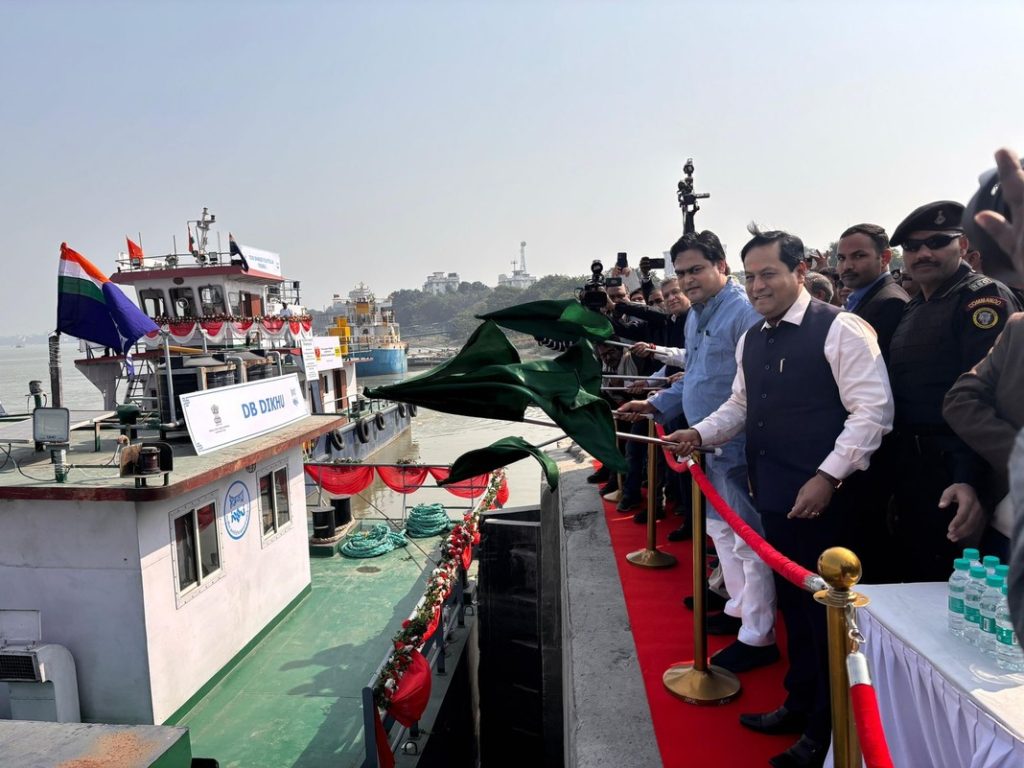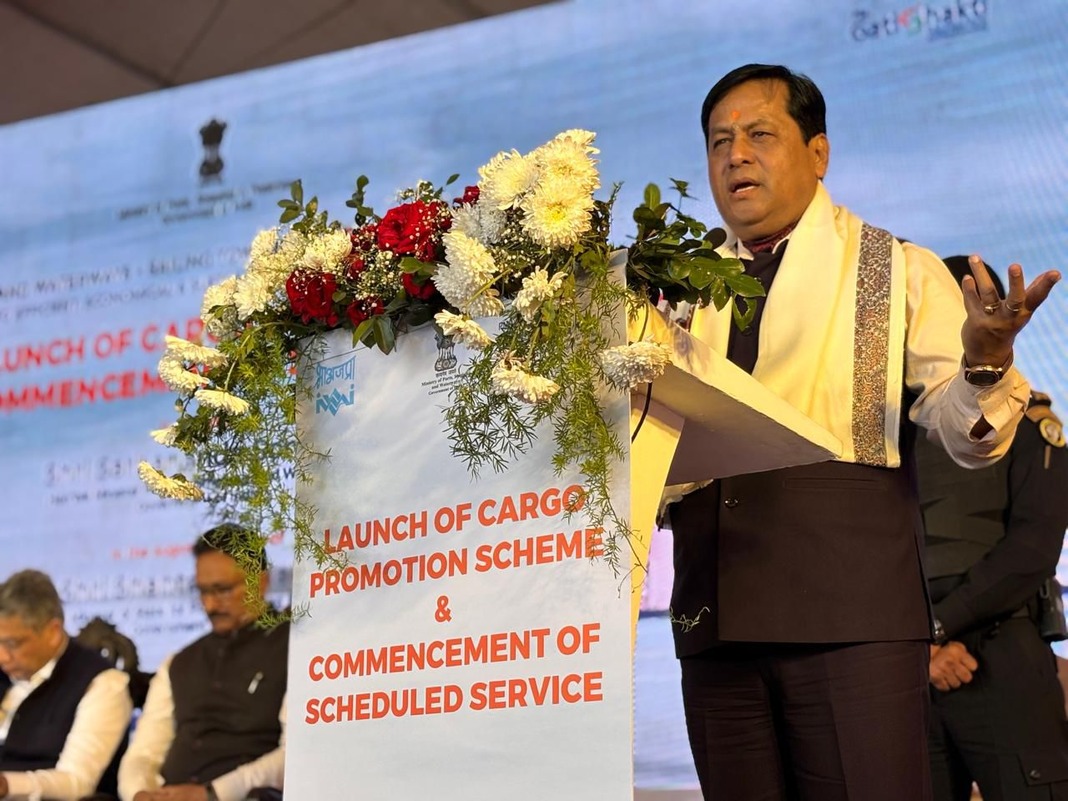Guwahati, Dec 15: The Centre has unveiled the ‘Jalvahak’ scheme, a move to incentivize cargo owners to shift long-haul goods transport from congested road and rail networks to the country’s extensive network of inland waterways. Spearheaded by the Union Minister of Ports, Shipping & Waterways (MoPSW), Sarbananda Sonowal, the policy aims to reduce logistics costs, decongest land transport, and promote sustainable shipping.
At the heart of the Jalvahak scheme is a direct financial incentive for cargo owners. Companies transporting goods over distances greater than 300 km via National Waterways 1 (Ganga), National Waterways 2 (Brahmaputra), and National Waterways 16 (Barak) are eligible for reimbursement of up to 35% of the total operating expenditure. This move seeks to make waterways a financially attractive alternative for bulk and containerized cargo.
Additionally, cargo owners are encouraged to use vessels operated by private entities beyond the Inland Waterways Authority of India (IWAI) and Inland & Coastal Shipping Limited (ICSL). The incentive structure, valid for an initial period of three years, positions waterways as a cost-effective and environmentally sustainable alternative to road and rail transport.

Three cargo vessels — MV AAI, MV Homi Bhaba, and MV Trishul with two Dumb Barges (Ajay & Dikhu) — were flagged off by Minister Sonowal. These vessels are set to operate on a newly introduced Fixed Day Scheduled Sailing Service, offering reliable and time-bound cargo movement.
These fixed schedules seek to instil confidence among cargo owners about the reliability and predictability of inland waterway transport.
Minister Sonowal highlighted the broader economic and ecological goals of the Jalvahak scheme. By promoting waterways as an efficient and environmentally responsible mode of cargo transport, the government aims to achieve a significant modal shift from roads and rail to waterways. The goal is to achieve 800 Million Tonne Kilometres of cargo movement on waterways by 2027, which would represent 17% of the current cargo traffic of 4700 Million Tonne Kilometres on national waterways.
The Jalvahak scheme presents an opportunity for shipping companies, freight forwarders, and trade associations to optimize their supply chain networks. Reduced operational costs, predictability of cargo movement, and improved delivery timelines are expected to appeal to key stakeholders, especially in the cement, coal, gypsum, and other bulk cargo sectors.




